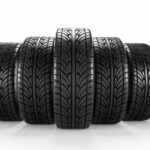Slide 1. Introduction.
The class develops the types of diesel fuels according to their composition and use, and the implications for fleet management.
Slide 2. Types of diesel according to their composition and use.
Knowing the types of diesel available on the market is essential to choose the right fuel and ensure the proper operation of the engine, as well as prolonging its life. Although they all start from a common base, each type has different properties that make them more or less suitable depending on the vehicle and its use.
- Types of diesel according to their composition and use.
We can classify the different diesel fuels according to their composition or use in:
1. Diesel A.
This is the conventional diesel fuel found in most service stations. It is intended for diesel vehicles in regular use, such as passenger cars or private vans.
o Contains additives that improve combustion and reduce the formation of residues.
o Maintains stable performance even in cold climates.
o It is the most common fuel for modern diesel cars.
2. Diesel A+ or Premium.
This is an improved version of the previous one, also known as Premium diesel. It includes additional additives that improve engine efficiency and reduce consumption.
o Improves injection system cleanliness.
o Increases performance by 2% to 5%.
o It is usually used in high-end vehicles or in those seeking more optimized engine maintenance.
3. Biodiesel.
Biodiesel is obtained from recycled vegetable oils or animal fats. Its main advantage is that it pollutes less than normal diesel.
o It reduces CO2 emissions.
o It can freeze at low temperatures, so it is often blended with conventional diesel.
o Not all engines are prepared for unmixed use. It is essential to consult the manufacturer.
4. B7, B10 and B20 diesel.
This classification indicates the percentage of biodiesel contained in the fuel:
o B7: contains 7% biodiesel, suitable for most current cars.
o B10 and B20: with 10% or 20% biodiesel respectively. Their use is more oriented to commercial fleets or adapted industrial vehicles.
These fuels are designed to offer a more sustainable alternative without sacrificing performance.
5. Diesel 1D, 2D and 4D.
A lesser known classification, but relevant in cold regions. It is based on the density and behavior of diesel in extreme temperatures:
o 1D: lighter, ideal for cold climates.
o 2D: for temperate climatic conditions.
o 4D: more viscous, used mainly in industrial machinery.
6. Diesel R33 or blue diesel.
This is one of the most recent fuels, also called blue diesel. It is composed of recycled waste and synthetic kerosenes, with a clear focus on sustainability.
o Reduces CO2 emissions by up to 20%.
o Compatible with modern diesel engines without the need for retrofitting.
o Not yet widely available, but gradually gaining presence.
7. Diesel B or B diesel.
Also known as red diesel, it is intended exclusively for agricultural, industrial and fishing use.
o Not suitable for conventional vehicles.
o It is more economical, but has a formulation with fewer additives.
o Its improper use in private cars carries significant penalties.
- What type of diesel should you use in your car.
Making the right choice between the different types of diesel has a direct impact on engine performance, durability and pollutant emissions.
So as not to make a mistake:
Always consult the manufacturer's manual. It clearly indicates which type of fuel is compatible.
If you have a modern car and are looking for greater efficiency, diesel A+ can offer better performance.
Avoid refueling with B diesel if your vehicle is not approved for it.
Today's market offers several types of diesel, each with specific advantages.
Knowing about them allows you to make more informed decisions when refueling, take care of your car's engine and reduce its environmental impact.
If in doubt, consult your local garage or check the manufacturer's specifications. The right fuel not only improves driving, it also prolongs engine life and contributes to a cleaner environment.
- Fleet management implications.
It is recommended to use the least polluting types of diesel, such as biodiesel and R33 diesel if the engine supports it.
Check that the vehicles in the fleet can use these types of diesel.
Drivers or vehicle refuelers must be told which diesel to use.
In car rental, leasing or car sharing fleets, the customer must be informed of the fuel to be used in the vehicle.
The use of inappropriate diesel fuel can cause breakdowns and malfunctioning of the vehicles.
If we have our own fuel tanks for refueling in our facilities, we can purchase the least polluting diesel for the fleet directly from an oil company or wholesale distributor.
Oil companies are researching new fuels that have lower pollutant emissions, you need to be informed of the new fuels that are available for your fleet.
Slide 3. Thank you for your time.
The class has developed what types of diesel fuels there are according to their composition and use, and the implications for fleet management, see you soon.
Download the audio




















